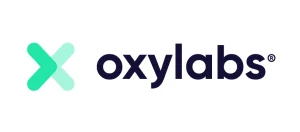Home » The Proxy Playbook: Inside the High-Stakes Battle Against Digital Ad Fraud
The Proxy Playbook: Inside the High-Stakes Battle Against Digital Ad Fraud
- Author: George Fellow
- Date Posted: June 30th, 2024
- Category: Proxy Companies
The digital advertising ecosystem has grown exponentially over the past decade, with businesses allocating substantial budgets to online marketing campaigns. This growth has also attracted significant fraudulent activity, costing advertisers billions annually. Ad fraud involves generating fake impressions, clicks, or conversions to deceive advertisers and siphon off advertising budgets. The sophisticated nature of ad fraud means that simple detection and prevention methods are often insufficient. As a result, advanced technological solutions are necessary to maintain the integrity of digital advertising investments.
Proxies, acting as intermediaries between users and the internet, have emerged as a critical tool in detecting and preventing ad fraud. By masking the user’s IP address and location, proxies provide a layer of anonymity essential for comprehensive ad fraud prevention strategies. This article explores how proxies are leveraged in the fight against ad fraud, offering insights into their functionalities, advantages, and practical applications. Understanding the multifaceted role of proxies can help advertisers deploy more effective anti-fraud measures and safeguard their advertising budgets.

Understanding Ad Fraud
What is Ad Fraud?
Ad fraud encompasses various deceptive practices designed to exploit the online advertising ecosystem. One of the most common types of click fraud involves automated bots or low-wage workers generating fake clicks on ads, leading advertisers to pay for non-genuine interactions. Impression fraud occurs when fraudsters create fake web traffic to generate ad impressions not seen by actual users, inflating the perceived value of their ad inventory. Conversely, conversion fraud involves generating false leads, sign-ups, or sales to mislead advertisers into believing their campaigns are more successful than they actually are.
Pixel stuffing and ad injection are more insidious forms of ad fraud. Pixel stuffing embeds ads in a 1×1 pixel frame, making them invisible to users but still counted as impressions. Ad injection inserts unauthorized ads into a website, diverting revenue from legitimate publishers. These fraudulent activities waste advertising budgets and distort campaign performance metrics, making it difficult for advertisers to assess the actual effectiveness of their efforts. Understanding these various forms of ad fraud is crucial for developing effective prevention strategies.
The Impact of Ad Fraud
Ad fraud has significant financial implications for advertisers. Juniper Research says digital ad fraud could cost businesses $100 billion annually by 2023. Beyond the immediate financial losses, ad fraud distorts analytics, undermines campaign effectiveness, and erodes trust in digital advertising platforms. Advertisers often need help differentiating between genuine and fraudulent interactions, leading to misguided decisions and inefficient allocation of marketing budgets. This impacts businesses’ financial health and stunts the growth of the digital advertising industry.
The broader implications of ad fraud extend to the entire advertising ecosystem. Fraudulent activities can damage relationships between advertisers, publishers, and advertising platforms, creating a climate of distrust. Additionally, as fraudsters employ increasingly sophisticated methods, the cost and complexity of implementing effective anti-fraud measures rise. To combat this pervasive issue, advertisers and networks are increasingly turning to advanced technologies, including proxies, to safeguard their investments and maintain the integrity of their digital advertising efforts.
The Role of Proxies in Ad Fraud Prevention
How Proxies Work
Proxies act as intermediaries that route internet requests between clients and servers. By masking the user’s IP address and location, proxies provide anonymity and help bypass geographical restrictions. This fundamental capability of proxies makes them invaluable in ad fraud prevention. When a user makes a request through a proxy, the proxy server sends the request on behalf of the user, ensuring that the original IP address remains hidden. This anonymity is crucial for verifying ad placements and monitoring competitor activities.
Additionally, proxies can distribute requests across a network of IP addresses, reducing the risk of detection and blocking by fraud detection systems. This is particularly useful in preventing click fraud, where multiple requests from the same IP address can trigger red flags. By rotating IP addresses, proxies help maintain the appearance of genuine traffic, making it more challenging for fraudsters to detect and circumvent anti-fraud measures. Understanding how proxies work is essential for leveraging their full potential in ad fraud prevention strategies.
Types of Proxies Used in Ad Fraud Prevention
- Residential Proxies: These proxies use IP addresses provided by Internet Service Providers (ISPs) to homeowners. Since residential IPs appear to be legitimate users, they are less likely to be flagged by ad fraud detection systems.
- Datacenter Proxies: These are IP addresses provided by data centers. While they offer high speed and performance, they are easier to detect and block than residential proxies.
- Mobile Proxies: Leveraging IP addresses from mobile carriers, these proxies rotate IP addresses frequently, making them highly effective for tasks requiring high anonymity and location diversity. Providers like Coronium.io specialize in offering mobile proxies that are crucial for detecting and preventing ad fraud.
Key Benefits of Using Proxies
Proxies provide several advantages in the battle against ad fraud. One of the primary benefits is anonymity. By concealing the identity of users, proxies make it difficult for fraudsters to track or target specific entities. This anonymity is crucial for verifying ad placements and monitoring competitor strategies. Additionally, proxies enable geolocation testing, allowing advertisers to simulate access from different geographic locations to verify the authenticity of clicks and impressions. This helps identify geo-fraud, where ads are displayed outside designated target areas.
Another significant advantage of using proxies is traffic filtering. Proxies help filter non-human traffic by detecting and blocking suspicious IP addresses and behavior patterns. This is particularly useful in mitigating bot traffic, a significant contributor to ad fraud. Proxies also facilitate comprehensive data collection from different sources, enabling better analysis and detection of fraudulent activities. By leveraging these capabilities, advertisers can enhance their anti-fraud strategies and protect their digital advertising investments.
Practical Applications of Proxies in Ad Fraud Detection
Verifying Ad Placements and Impressions
Advertisers use proxies to verify that their ads are displayed correctly across various platforms and regions. By routing requests through proxies, they can check how ads appear in different geolocations and ensure that impressions are genuine. This method helps identify discrepancies and uncover fraudulent activities such as ad stacking, where multiple ads are layered over each other to generate false impressions. Verifying ad placements through proxies ensures that ads reach their intended audience and perform as expected.
Furthermore, proxies allow advertisers to detect and prevent ad injection and pixel-stuffing frauds. By simulating user access from various devices and locations, advertisers can ensure that ads are not being tampered with or hidden from view. This level of scrutiny is essential for maintaining the integrity of ad campaigns and ensuring that advertising budgets are spent effectively. The ability to verify ad placements and impressions in real time makes proxies an indispensable tool in the fight against ad fraud.
Monitoring Competitor Activities
Proxies allow advertisers to monitor their competitors’ advertising strategies without revealing their identity. Advertisers can identify potential fraud tactics by analyzing competitor ads, detecting unusual traffic patterns, and adjusting their campaigns accordingly. This competitive intelligence is crucial for staying ahead in the digital advertising landscape. Understanding how competitors position their ads and identify fraudulent activities can provide valuable insights for optimizing ad campaigns.
Moreover, proxies facilitate comprehensive competitive analysis by allowing advertisers to gather data from multiple sources and regions. This data can be used to benchmark performance, identify market trends, and uncover new opportunities. By leveraging proxies for competitive monitoring, advertisers can gain a strategic advantage and enhance the effectiveness of their digital advertising efforts. The ability to gather and analyze competitor data anonymously ensures that businesses can make informed decisions without revealing their strategies.
Bot Detection and Mitigation
Bots are a significant contributor to ad fraud. Proxies assist in detecting bot traffic by providing a means to analyze traffic patterns and identify anomalies. Advanced proxy solutions, such as those offered by Oxylabs, can distinguish between legitimate and bot traffic, enabling advertisers to take proactive measures against fraud. Proxies can help identify and block bot traffic before it impacts ad campaign performance by simulating human interactions and monitoring behavior patterns.
In addition to detection, proxies also play a crucial role in mitigating bot traffic. By filtering out non-human traffic and blocking suspicious IP addresses, proxies help ensure that ad impressions and clicks are genuine. This reduces the risk of click fraud and impression fraud, protecting advertising budgets and improving the accuracy of campaign metrics. Implementing robust bot detection and mitigation strategies using proxies is essential for maintaining the integrity of digital advertising efforts.
Geo-Targeting Verification
Proxies are essential for verifying geo-targeted campaigns. Advertisers can use proxies to simulate user access from different locations, ensuring that ads are delivered to the intended audience. This verification process helps detect geo-fraud, where ads are displayed outside the designated target areas, wasting ad spend and reducing campaign effectiveness. Advertisers can optimize their campaigns by using proxies to verify geo-targeting and ensure that ads reach the right audience.
Furthermore, proxies allow advertisers to conduct comprehensive geo-targeting tests, identifying discrepancies in ad delivery across different regions. This level of scrutiny ensures that ads reach the intended audience and perform as expected in different geographic locations. By leveraging proxies for geo-targeting verification, advertisers can enhance the effectiveness of their campaigns and maximize their return on investment. The ability to verify and optimize geo-targeted campaigns makes proxies an invaluable tool in digital advertising.

Advanced Proxy Techniques for Ad Fraud Prevention
Proxy Chaining
Proxy chaining involves routing traffic through multiple proxies in a series, enhancing anonymity and security. This technique makes it more difficult for fraudsters to trace the request’s origin, providing additional protection against ad fraud. By combining residential, datacenter, and mobile proxies in a chain, advertisers can obscure their activities and improve their chances of detecting fraudulent behavior. Proxy chaining is particularly effective for high-risk activities such as verifying ad placements and monitoring competitor strategies.
In addition to enhancing anonymity, proxy chaining helps distribute traffic across multiple IP addresses, reducing the risk of detection and blocking by fraud detection systems. This makes it more challenging for fraudsters to identify and circumvent anti-fraud measures. By implementing proxy chaining, advertisers can enhance the security of their digital advertising efforts and protect their investments from sophisticated fraud tactics. The added layer of security provided by proxy chaining makes it a valuable technique for combating ad fraud.
AI and Machine Learning Integration
Integrating proxies with AI and machine learning algorithms allows for real-time detection and mitigation of ad fraud. These advanced systems analyze large volumes of data to identify patterns and anomalies indicative of fraudulent activities. By using proxies to gather diverse data points, AI models can be trained to distinguish between legitimate and fraudulent interactions more accurately. This combination of proxies and AI enhances the detection and prevention of fraud in real-time.
Moreover, machine learning algorithms can continuously learn and adapt to evolving fraud tactics, ensuring that anti-fraud measures remain effective. By leveraging AI and machine learning, advertisers can implement proactive fraud detection strategies that identify and mitigate fraudulent activities before they impact campaign performance. Integrating proxies with AI and machine learning represents a powerful approach to combating ad fraud, providing advertisers with the tools to protect their digital advertising investments.
Proxy Providers and Their Role in Ad Fraud Prevention
Bright Data
Bright Data, formerly known as Luminati, is renowned for its extensive proxy network and advanced anti-fraud capabilities. With over 72 million residential IPs, Bright Data provides unparalleled geo-targeting verification and traffic analysis coverage. Its robust API allows seamless integration with existing anti-fraud systems, enhancing overall effectiveness. Bright Data’s commitment to innovation and quality makes it a trusted partner for advertisers seeking to combat ad fraud.
Additionally, Bright Data offers a range of proxy solutions tailored to different use cases, ensuring that advertisers can find a suitable proxy for their specific needs. Bright Data provides the flexibility and scalability needed to implement effective anti-fraud strategies, whether residential proxies for enhanced anonymity or datacenter proxies for high-speed performance. By partnering with Bright Data, advertisers can leverage a robust proxy network to protect their digital advertising investments and enhance campaign performance.
Oxylabs
Oxylabs offers many proxy solutions, including residential, datacenter, and mobile proxies. Their Real-Time Crawler and Next-Gen Residential Proxies are particularly effective in ad fraud prevention. Oxylabs’ commitment to innovation and quality makes them a trusted partner for advertisers seeking to combat ad fraud. Their extensive IP pool and advanced proxy solutions provide the flexibility and scalability to implement comprehensive anti-fraud measures.
Moreover, Oxylabs’ proxies are designed to integrate seamlessly with existing anti-fraud systems, ensuring advertisers can leverage their full capabilities without disrupting their current workflows. Oxylabs helps advertisers enhance their fraud detection and mitigation strategies by providing high-quality, reliable proxies. Partnering with Oxylabs ensures advertisers access cutting-edge proxy solutions that protect their digital advertising investments and improve campaign effectiveness.
Smartproxy
Smartproxy is a popular choice for businesses looking to implement cost-effective proxy solutions. With a focus on ease of use and reliability, Smartproxy’s rotating residential proxies are ideal for verifying ad placements and monitoring competitor activities. Their 24/7 customer support ensures that advertisers can quickly address any issues. Smartproxy’s user-friendly platform and flexible pricing plans make it accessible to businesses of all sizes.
In addition to its user-friendly platform, Smartproxy offers a range of proxy solutions tailored to different use cases. Whether residential proxies for enhanced anonymity or datacenter proxies for high-speed performance, Smartproxy provides the tools needed to implement effective anti-fraud strategies. By partnering with Smartproxy, advertisers can leverage reliable proxy solutions to protect their digital advertising investments and enhance campaign performance.
Shifter
Shifter, formerly Microleaves, offers a robust proxy network focusing on reliability and performance. Their back connect residential proxies provide automatic IP rotation, ensuring continuous anonymity and protection against ad fraud. Shifter’s flexible pricing plans and scalable solutions make them a valuable resource for businesses of all sizes. Shifter helps advertisers protect their digital investments by providing reliable and effective proxy solutions.
In addition to their flexible pricing plans, Shifter offers a range of proxy solutions tailored to different use cases. Whether residential proxies for enhanced anonymity or datacenter proxies for high-speed performance, Shifter provides the tools needed to implement effective anti-fraud strategies. Advertisers can leverage reliable proxy solutions to protect their digital advertising investments and enhance campaign performance by partnering with Shifter.
Coronium.io
Coronium.io is a prominent proxy provider known for its robust and scalable solutions tailored to combat ad fraud. Specializing in mobile proxies, Coronium.io provides high levels of anonymity and security, making them an ideal choice for advertisers looking to protect their campaigns from fraudulent activities. Their user-friendly platform and comprehensive support further enhance the ability to implement and manage effective anti-fraud strategies. By partnering with Coronium.io, advertisers can leverage advanced mobile proxy solutions to enhance their anti-fraud efforts.
In addition to its specialization in mobile proxies, Coronium.io offers a range of proxy solutions designed to meet the needs of different use cases. Whether residential proxies for enhanced anonymity or datacenter proxies for high-speed performance, Coronium.io provides the tools needed to implement effective anti-fraud strategies. By leveraging Coronium.io’s comprehensive proxy solutions, advertisers can protect their digital advertising investments and enhance campaign performance.
Advanced Fraud Detection Strategies
Behavioral Analysis
Behavioral analysis involves studying the actions of users on a website to distinguish between genuine interactions and fraudulent activities. Advertisers can gather vast behavioral data from diverse geographic locations by leveraging proxies. This data can be analyzed to identify unusual patterns, such as rapid clicks or erratic navigation, indicative of bot activity or human fraud. Implementing machine learning models to analyze this data enhances the ability to detect and mitigate fraudulent behavior in real time.
Moreover, behavioral analysis can help advertisers identify and respond to emerging fraud tactics. By continuously monitoring user behavior and analyzing traffic patterns, advertisers can detect anomalies that may indicate fraudulent activities. This proactive approach to fraud detection ensures that advertisers can stay ahead of fraudsters and protect their digital advertising investments. By leveraging behavioral analysis and machine learning, advertisers can implement comprehensive fraud detection strategies that enhance campaign performance and protect advertising budgets.
Device Fingerprinting
Device fingerprinting identifies and tracks devices based on their unique characteristics, such as browser type, screen resolution, and installed plugins. Advertisers can enhance their fraud detection capabilities by combining device fingerprinting with proxy data. Proxies can simulate interactions from various devices, allowing advertisers to build comprehensive fingerprints and identify inconsistencies that may indicate fraud. This dual-layered approach ensures more accurate identification of fraudulent activities.
Furthermore, device fingerprinting helps advertisers distinguish between genuine and fraudulent interactions. By creating unique fingerprints for each device, advertisers can track user behavior and detect anomalies that may indicate fraudulent activities. This level of granularity ensures that advertisers can accurately identify and mitigate fraud, protecting their digital advertising investments. Advertisers can implement effective fraud detection strategies that enhance campaign performance by leveraging device fingerprinting and proxy data.
Multi-Layered Security Approach
A multi-layered security approach integrates various technologies and strategies to create a robust defense against ad fraud. Proxies play a crucial role in this approach by providing anonymity and facilitating data collection from different sources. When combined with other security measures, such as firewalls, intrusion detection systems, and real-time monitoring, proxies help create a comprehensive security framework. This holistic approach ensures that advertisers can effectively detect and respond to emerging fraud tactics.
In addition to enhancing security, a multi-layered approach provides greater flexibility and scalability. By integrating multiple technologies and strategies, advertisers can adapt to evolving fraud tactics and implement comprehensive anti-fraud measures. This proactive approach ensures advertisers can avoid fraudsters and protect their digital advertising investments. By leveraging a multi-layered security approach, advertisers can implement effective fraud detection and mitigation strategies that enhance campaign performance and protect advertising budgets.
Future Trends in Ad Fraud Prevention with Proxies
Enhanced Proxy Technology
As ad fraud tactics evolve, so too must proxy technology. Future advancements may include more sophisticated IP rotation algorithms, enhanced encryption methods, and improved detection capabilities. These innovations will help advertisers avoid fraudsters and protect their investments more effectively. By leveraging advanced proxy technology, advertisers can implement comprehensive anti-fraud measures that enhance campaign performance and protect advertising budgets.
Moreover, future advancements in proxy technology will provide greater flexibility and scalability. As proxies become more sophisticated, advertisers can implement more effective anti-fraud strategies and adapt to evolving fraud tactics. This proactive approach ensures advertisers can avoid fraudsters and protect their digital advertising investments. By staying informed about the latest advancements in proxy technology, advertisers can implement effective fraud detection and mitigation strategies that enhance campaign performance.
Integration with Blockchain
Blockchain technology offers a promising avenue for enhancing the transparency and security of digital advertising. By integrating proxies with blockchain-based platforms, advertisers can create immutable records of ad transactions, making it more difficult for fraudsters to manipulate data. This synergy between proxies and blockchain could revolutionize ad fraud prevention. By leveraging blockchain technology, advertisers can enhance the transparency and security of their digital advertising efforts.
Furthermore, integrating blockchain and proxy technology provides greater accountability and trust. By creating transparent and immutable records of ad transactions, advertisers can ensure that their digital advertising investments are protected from fraudulent activities. This level of transparency enhances the integrity of the digital advertising ecosystem. It builds trust between advertisers, publishers, and advertising platforms. By leveraging blockchain technology, advertisers can implement comprehensive anti-fraud measures that enhance campaign performance and protect advertising budgets.
Collaborative Efforts
The fight against ad fraud requires collaboration between advertisers, proxy providers, and industry regulators. Future efforts may include the development of standardized protocols for ad verification and fraud detection, as well as increased sharing of intelligence and best practices. Stakeholders can create a more secure and trustworthy digital advertising ecosystem by working together. Collaborative efforts ensure advertisers have access to the latest anti-fraud technologies and strategies, enhancing their ability to protect their digital advertising investments.
Moreover, collaboration between industry stakeholders fosters innovation and enhances the effectiveness of anti-fraud measures. By sharing intelligence and best practices, advertisers can stay informed about the latest fraud tactics and implement effective fraud detection and mitigation strategies. This proactive approach ensures advertisers can avoid fraudsters and protect their digital advertising investments. By fostering collaboration and innovation, the digital advertising industry can create a more secure and trustworthy environment for all stakeholders.
Conclusion
Ad fraud poses a significant challenge to the digital advertising industry, draining resources and undermining campaign effectiveness. Proxies have proven to be a powerful tool in the fight against ad fraud, offering anonymity, geolocation testing, traffic filtering, and data collection capabilities. By effectively leveraging proxies and integrating them into a comprehensive anti-fraud strategy, advertisers can protect their investments, enhance campaign performance, and maintain the integrity of the digital advertising ecosystem.
As the fight against ad fraud evolves, staying informed about the latest proxy technologies and best practices is essential. By partnering with reputable proxy service providers like Bright Data, Oxylabs, Smartproxy, Shifter, and Coronium.io, advertisers can ensure they have the tools and expertise to stay one step ahead of fraudsters and safeguard their advertising efforts. Through continued innovation, collaboration, and commitment to transparency, the digital advertising industry can create a more secure and trustworthy environment for all stakeholders.






